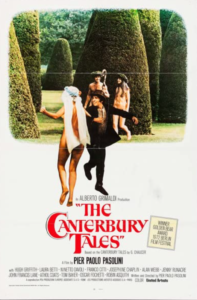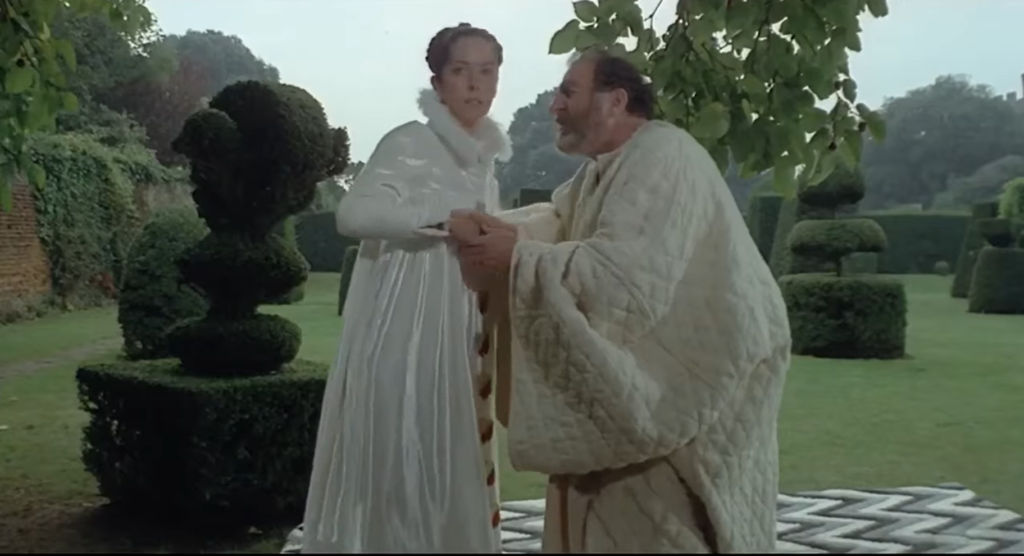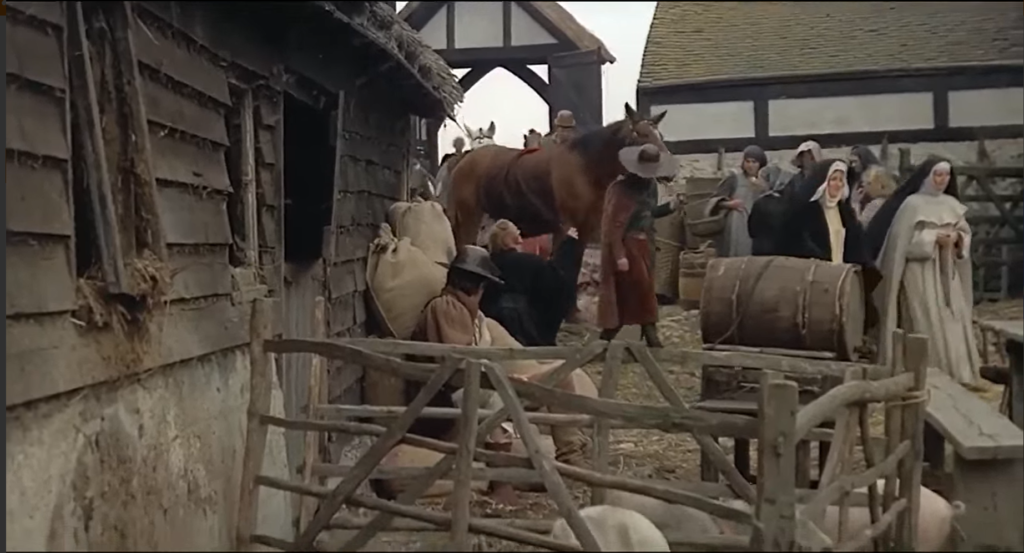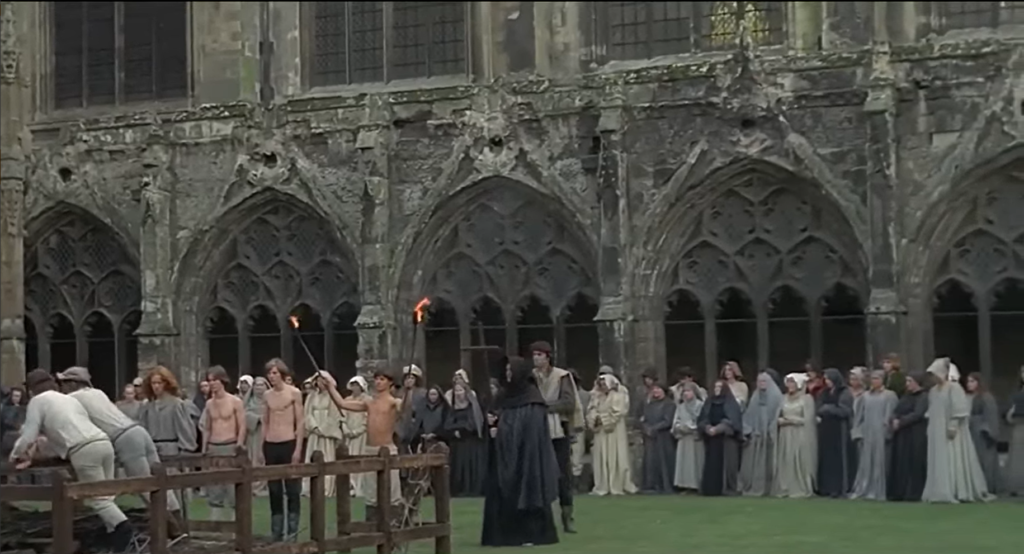Canterbury Tales, The (1972)
“You take a path to Canterbury — well, good luck. The holy blessed martyrs will reward you.”
|
Synopsis: |
|
Genres, Themes, Actors, and Directors:
Review: The opening story (“The Merchant’s Tale”), about a lecherous merchant named Sir January (Hugh Griffith) whose beautiful new wife, May (Josephine Chaplin), cuckolds him while he’s under a spell of blindness, is only mildly amusing, but at least promises more of the same type of naughty tales we saw in The Decameron. The next vignette takes on a much darker tone, as we watch two different men — one wealthy, one poor — being spied on while committing the heretical act of “buggering”, then blackmailed. The gruesome outcome poignantly points out the hypocrisy of medieval “pardoning”. The rest of the film, unfortunately, quickly goes downhill, as tale after tale fails to provide either much humor or insight. We’re exposed to plenty of explicit sex and genitalia, several explosive farts, and — in Pasolini’s infamous vision of hell near the end of the film — a red-skinned devil literally defecating friars. Those who enjoy such coarse imagery will be delighted, but the rest of us will simply suffer. Redeeming Qualities and Moments:
Must See? Links: |







One thought on “Canterbury Tales, The (1972)”
Not a must.
Commendable production and costume design in the service of a boring film.
Somewhere along the line, Pasolini began obtaining the generous go-ahead for this kind of undisciplined and tedious narrative.
What seems meant as celebratory is an unsatisfying product of sexual repression, eventually blending the irreverent with the infantile.
Skip it.